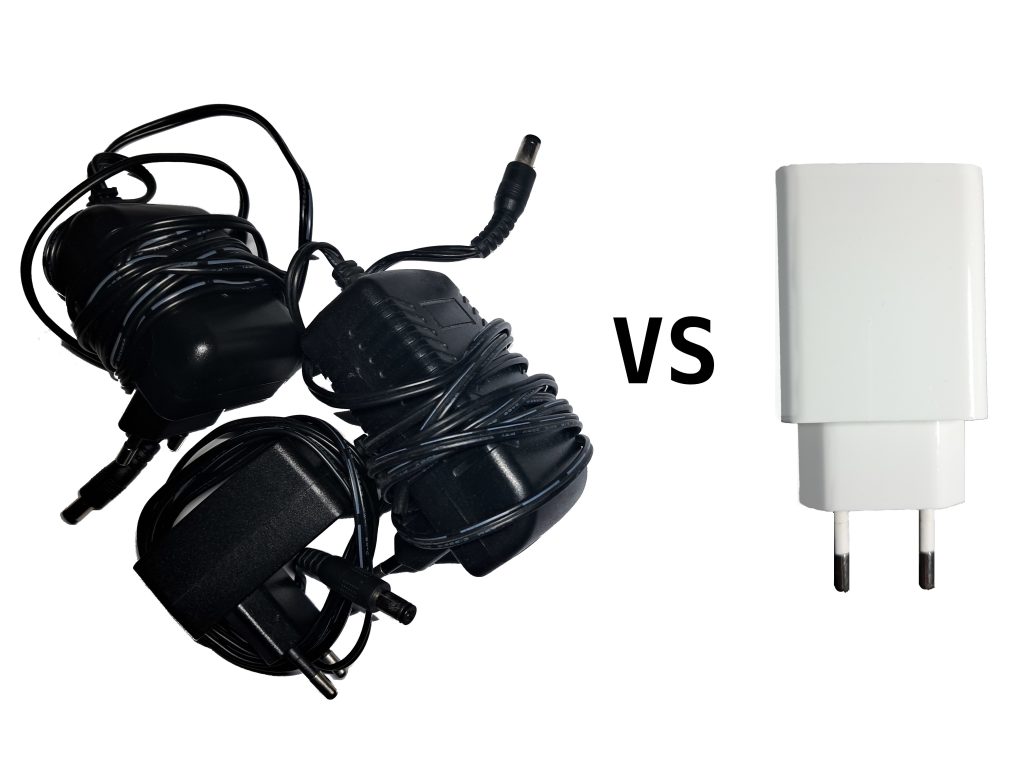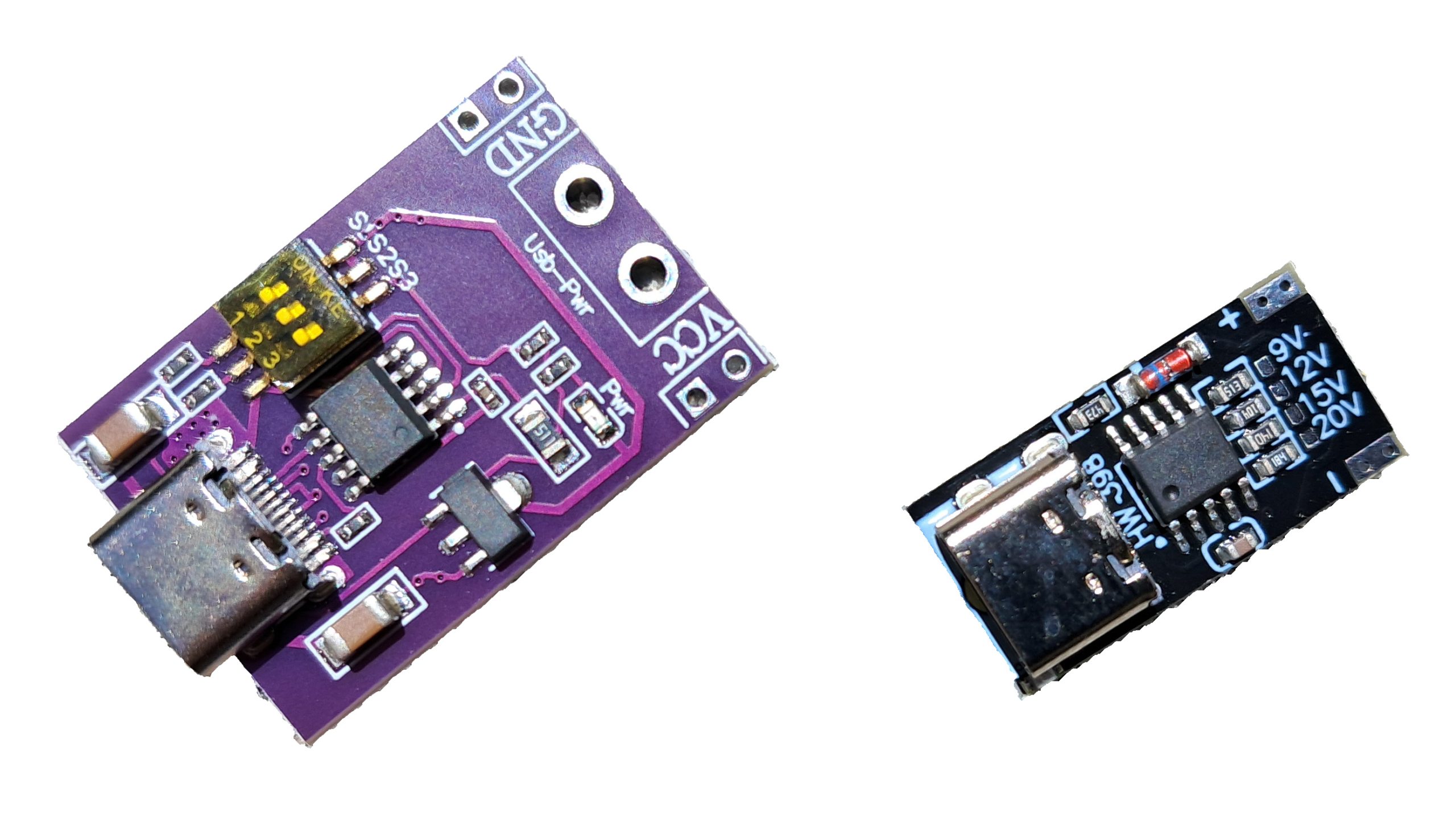
Have you ever wondered why some chargers charge your smartphone faster than others? This property may allow it to power some other electronic devices as well. Let’s say we have a fountain pump for a garden pond that requires 12V input. Of course, we could buy a dedicated DC input with the relevant connector, but often, we can also use a phone charger that most of us already have at home. The question then is how to get 12V from the charger output, since the USB port only provides 5V. Actually, modern chargers allow the output voltage to be negotiated to 9V, 12V, 15V or 20V to increase transmission efficiency, and this is more or less how our smartphones can charge faster. To use the higher voltage for our fountain pump, we can use a USB-C trigger, which costs just about €1 and can often be bought online with the device in the same parcel. The figure below shows two common types of USB-C trigger.

The difference lies in how we configure them. In the trigger on the left, we can adjust the voltage using the switches. The documentation or the reverse side explains how to set the switches to achieve the desired voltage. For the trigger on the right, we use jumpers for this purpose. By default, this device delivers 5V; to change this, you need to connect the relevant ‘pins’ using a soldering iron. There are also fixed triggers which are manufactured to deliver a specific voltage.
OK, but can I use any charger to adjust the voltage? Unfortunately not, but as time passes, more and more of our household chargers support more combinations to charge bateries faster. If your laptop has a USB-C DC input, then it is most likely that your charger supports all available voltage values. The image below shows a sample charger that came with a smartphone. It supports the QuickCharge 3+ protocol, and allows for setting voltage up to 12V. We can also see the supported power, which should be greater than or equal to the power needed by your device. The charger in the image has a maximal power output of 20W and can, for instance, power a pump that requires 19W.

If you configure your trigger to use 20V for the charger above, then it will provide the highest voltage that it supports, which is 12V for our case.
In summary, if you are about to purchase a DC input for your device, consider using the chargers you already have at home. This will save you money, space and help protect the environment. Newer protocols, such as Power Delivery 3.0, allow you to set the voltage in a range from 3.3V to 21V with 0.02V increment, however triggers for them are not as common. If you choose to use a USB trigger to power your device then you can also use power bank as a power supply.

Leave a Reply